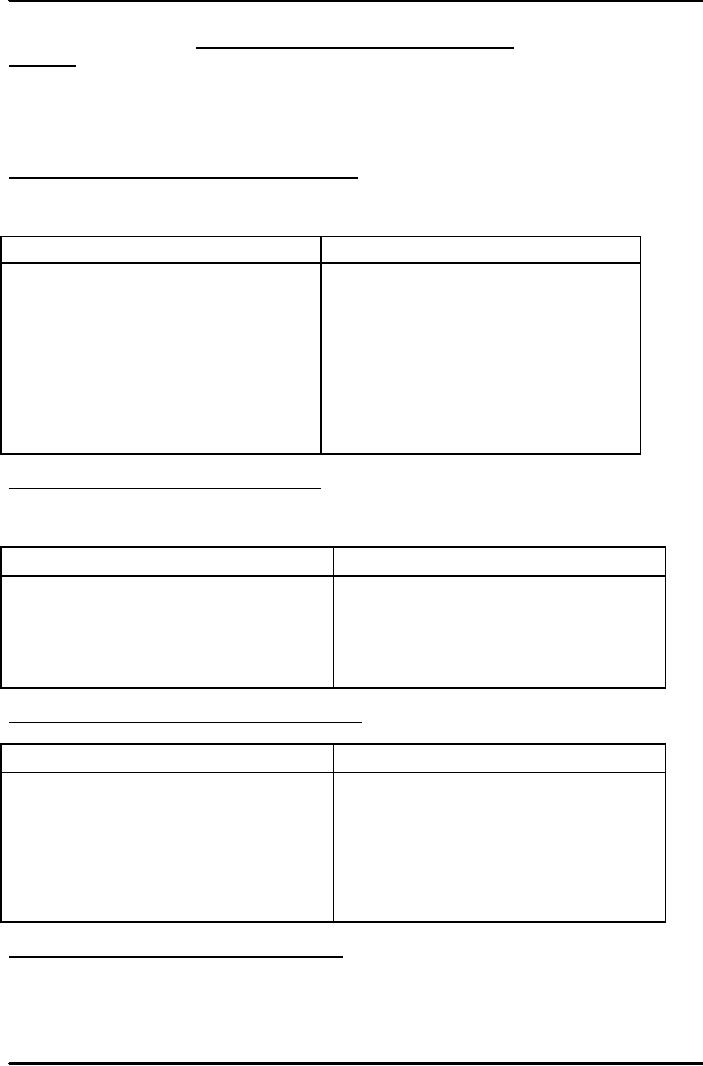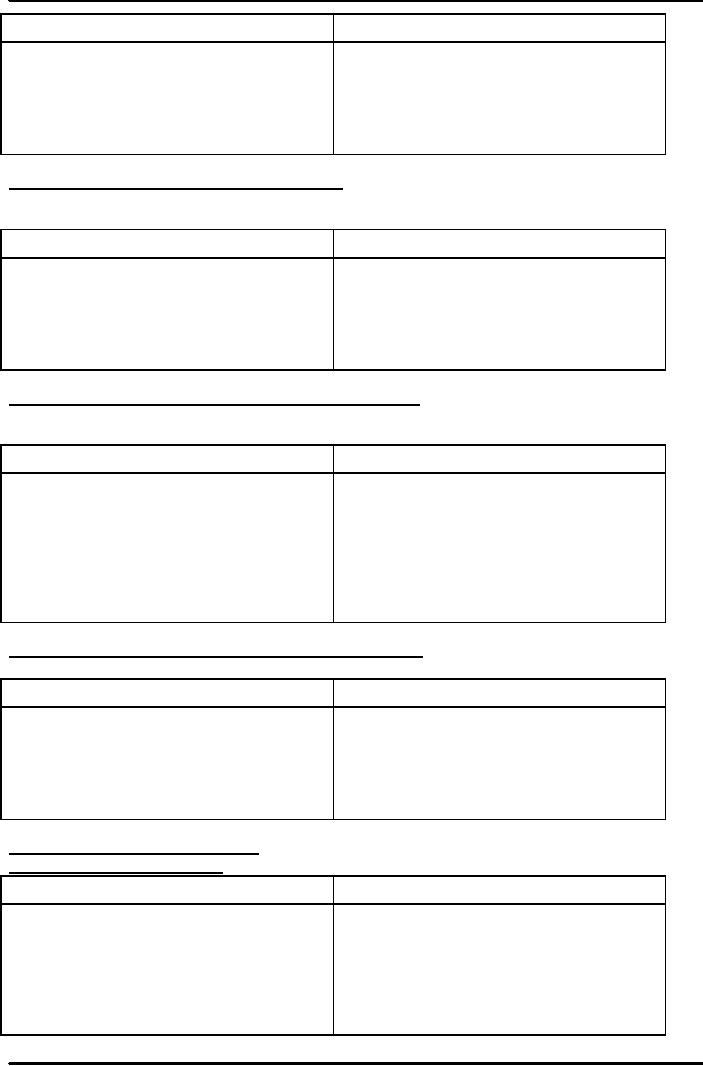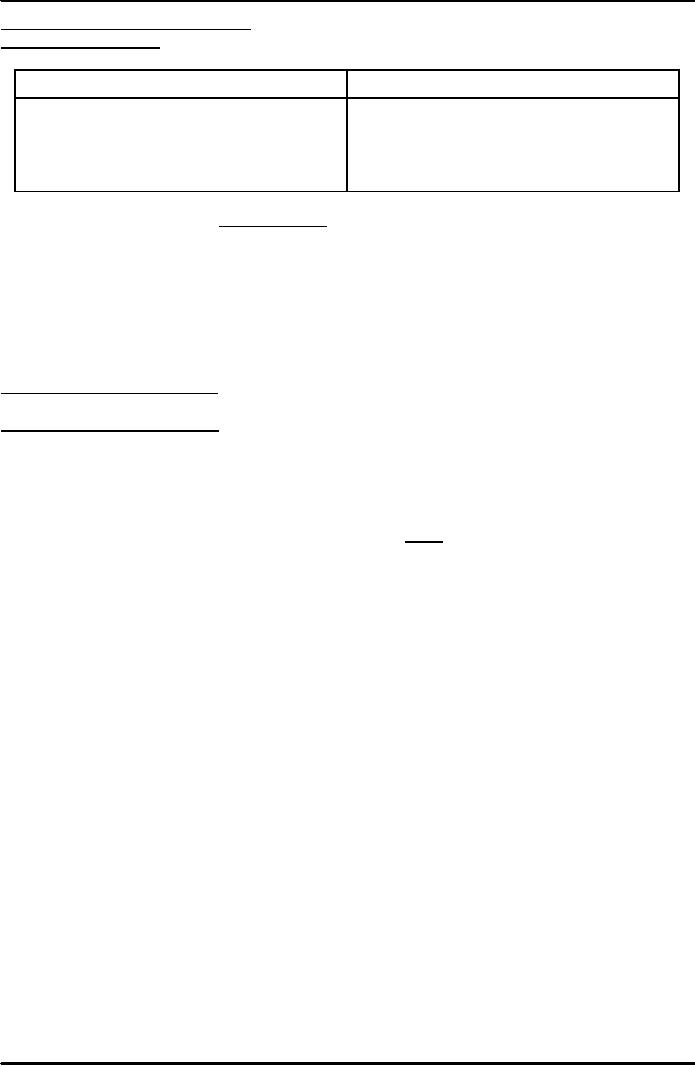 |
CHOICE OF MEDIA FOR PR COMPAIGN:Communication Channels & Media |
| << MODERN DAY VALUES OF PR:Ethics Of Public Relations |
| PR TECHNIQUES:Tactics & Techniques >> |

Fundamentals
of Public Relations MCM 401
VU
Lesson
28
CHOICE
OF MEDIA FOR PR COMPAIGN
Overview
As
has often been explained the
choice of media in a public relations
campaign is very important.
However,
in
order to make this choice it is
essential that the public relations
professional should be aware of
the
advantages
and disadvantages of different
media. This will enable
him to select the appropriate media
for
better
and positive results.
Communication
Channels & Media----
Television
Now
a days Television has become
a very important media with the advent of
round the clock coverage
and
"presence
always" on every
occasion.
ADVANTAGES
DISADVANTAGES
1.
Combines sight, sound &
motion
1.
Message
limited by restricted time
attributes.
segments.
2.
Permits physical demonstration.
2.
No
possibility of referral to
message.
3.
Believability due to immediacy of
message.
3.
Availabilities
sometimes difficult to
arrange.
4.
High
impact of message.
4.
High
time costs.
5.
Huge
Audiences.
5.
Waste
coverage.
6.
Good
product identification.
6.
High
production cost.
7.
Popular
medium.
7.
Poor
color transmission.
Communication
Channels & Media---
Radio
Although
Radio had lost its charm as
an effective and desired media
yet it has bounced back
with distances
increasing
to and from residence to
place of work, the in car
radio and popular programming
has
reinvented
its importance as an effective
media.
ADVANTAGES
DISADVANTAGES
1.
Selectivity of geographical
markets.
1.
Message limited by restricted time
segments.
2.
Good saturation of local
markets.
2.
No possibility for consumer referral
to
3.
Ease of changing advertising copy.
message.
4.
Relatively low cost.
3.
No visual appeal.
4.
Waste coverage.
Communication
Channels & Media---Newspapers
News
papers since its emergence
as important media is still in
extensive use as effective
media.
ADVANTAGES
DISADVANTAGES
1.
Selectivity of geographical
markets.
1.
High cost for national
coverage.
2.
Ease of changing advertising copy.
2.
Shortness of message
life.
3.
Reaches all income
groups.
3.
Waste circulation.
4.
Ease of scheduling
advertisements.
4.
Differences of sizes &
formats.
5.
Relatively low cost.
5.
Rate differential between
local / national
6.
Good medium for manufacturer/dealer
advertisements.
advertisements.
6.
Sometimes poor color
reproduction.
Communication
Channels & Media Magazines
Magazines
are also useful media as
typical subject magazines can
serve the media campaign
purposes to a
great
extent.
70

Fundamentals
of Public Relations MCM 401
VU
ADVANTAGES
DISADVANTAGES
1.
Selectivity of audience.
1.
Often duplicate circulation.
2.
Reaches more affluent
consumers.
2.
Usually cannot dominate in a local
market.
3.
Offers prestige to an
advertiser.
3.
Long closing dates.
4
Pass along readership.
4.
No immediacy of message.
5.
Good color
reproduction.
5.
Sometimes high production
cost.
Communication
Channels & Media Direct
Mail
Direct
mailing method is very commonly used as it is an
inexpensive and easy method of conveying
the
message
to the desired public.
ADVANTAGES
DISADVANTAGES
1.
Extremely selective.
1.
Often has poor
image.
2.
Message can be very
personalized.
2.
Can be quite
expensive.
3.
Little competition with
other advertisements.
3.
Many restrictive postal
regulations.
4.
Easy to measure effect of
advertisements.
5.
Provides easy means for
consumer action.
4.
Problems in maintaining mailing
lists.
Communication
Channels & Media Pamphlets &
Booklets
Pamphlets
help a great deal in communicating the
detailed message at point of sales
and also as an
enclosure
with
the direct mail.
ADVANTAGES
DISADVANTAGES
1.
Offer detailed message at
point of sale.
1.
Dealers often fail to
use.
2.
Supplement a personal sales
presentation.
3.
Offer to potential buyers a
good referral 2. May have a relatively
high unit cost.
means.
4.
Good color
reproduction.
3.
Few creative
specialists.
4.
Effectiveness difficult to
measure.
Communication
Channels & Media -Media
Transit Posters
This
is also an effective media
channel.
ADVANTAGES
DISADVANTAGES
1.
Selectivity of geographical
markets.
1.
Cannot be employed in all
areas.
2.
Captive audience.
2.
Waste circulation.
3.
Very low cost.
3.
Surroundings may be
disreputable.
4.
Good color
reproduction.
4.
Few creative
specialists.
5.
High repetitive
value.
Communication
Channels & Media
(
Point Of Purchase Displays
)
ADVANTAGES
DISADVANTAGES
1.
Presents message at point of
sale.
1.
Dealer apathy in installation.
2.
Great flexibility for
creativity.
2.
Long production
period.
3.
Ability to demonstrate product in
use.
3.
High unit cost.
4.
Good color
reproduction.
5.
Repetitive value.
4.
Shipping problems.
5.
Space problem.
71

Fundamentals
of Public Relations MCM 401
VU
Communication
Channels & Media
Advertising
Specialists
Advertising
specialists can also be a
useful media channel.
ADVANTAGES
DISADVANTAGES
1.
Unique presentation.
1.
Subject to fads.
2.
High repetitive
value.
2.
Message must be short.
3.
Has a "gift" quality.
3.
May have relatively high
unit cost.
4.
Relatively long life.
4.
Effectiveness difficult to
measure.
Publicity
Through Mass Media Follow 6
Rules
1.
Make sure information you
offer is appropriate to the medium in
content & style, and
that it is
timely.
2.
Check all facts carefully
for accuracy & double
check for missing
information.
3.
To deal with any questions,
depute a person.
4.
Include captions on photographs with
felt pen.
5.
Never call to find why a
story was not published or when
will it appears.
6.
Do not send out a note
asking for clippings as newspapers do
not run clippings.
Cardinal
Rules For Direct
Mail
7
Rules Governing Direct
Mail.
1.
Concentrate on objective of mailing.
2.
Use correct mailing list.
3.
Write copy what the product or
service does for the
recipient.
4.
Design the layout & format to
fit the image of the product or
service you are
presenting.
5.
Make it easy for the
prospect to take the action you
want.
6.
Tell the story at least
THREE times & repeat
mailings 2 or 3 times.
7.
Research all direct mail by testing the
offer, package & list
for attractiveness & make
alternative
offers.
72
Table of Contents:
- INTRODUCTION & BRIEF HISTORY:Definitions Of Public Relations
- HOW DOES PR WORK?:OVERVIEW, Formulation of policy
- PUBLIC RELATIONS DISTINGUISHED:Size of a PR Department.
- PUBLICS OF PR:Expanded Publics, Few Examples Of Publics
- PLANNING PUBLIC RELATIONS PROGRAMMES:Print Media, Electronic Media
- MEDIAS OF PR:Media for External Publics, Principles of Good Press Relations
- PRESS RELATIONS IN PR:What is News, Secrets Of Good News Release.
- CREATED PRIVATE MEDIA:Private Media, New Forms of House Journals
- SPECIAL USES OF PUBLIC RELATIONS:Crisis Management, Skills Of PR
- BUDGETING IN PR:Labour, Office Overheads, PR & Photographs
- PUBLIC RELATIONS PROBLEMS:Defining PR problems, C’s of PR explained
- METHODS OF COMMUNICATION:Psychology of Public Relations
- PR IN VARIOUS ORGANIZATIONS:Techniques of Trade Association PR
- PR IN LABOUR UNIONS & RELIGIOUS GROUPS:Community Public Relations
- PR IN EDUCATIONAL INSTITUTIONS & IN MEDIA CHANNALS
- USING ADVERTISING FOR P R COMMUNICATION:Role Of PR
- ROLE OF PUBLIC RELATIONS IN MARKETING:How To Educate The Market
- PUBLIC RELATIONS AND CORPORATE STRUCTURE:Corporate Identity Essentials
- E-PR & ITS TOOLS:Immediate Points To Consider, Using Email As PR Tool
- SPONSORSHIP—AN IMPORTANT PR TOOL:PR & Communication Audit
- HOUSE JOURNALS:Possible Publics Of House Journals, Exhibitions & PR
- CRISIS MANAGEMENT IN PR:Plan Of Action Adopted, Interview at your place
- ADVERTISING IN PR:Broad Objectives Of Advertising, Direct Advertising.
- INTERNATIONAL PUBLIC RELATIONS:Media Used, Within Store Contacts
- PUBLIC RELATIONS CONSULTANCY:Disadvantages, Mass Communication
- PUBLIC RELATION’S ROLE IN MARKET EDUCATION:Kinds Of Markets
- MODERN DAY VALUES OF PR:Ethics Of Public Relations
- CHOICE OF MEDIA FOR PR COMPAIGN:Communication Channels & Media
- PR TECHNIQUES:Tactics & Techniques
- DESIGNING PR COMPAIGNS:Definitive Mission statement, Reputation.
- PUBLIC OPINION:Identifying Priority Publics, If Goal Is Attitude Change
- PUBLIC RELATIONS AND RESEARCH:Planning Phase Of Research
- PR AND RESEARCH:Unobtrusive Measures, Questionnaires For Survey
- PROBLEMS SOLVING STRATEGIES:Communicate results
- PERSUASION & COMMUNICATION THEORIES:Message Orientation
- COMMUNICATION CONCEPTS & THEORIES:Research and Persuasion
- PUBLIC RELATIONS & LAW:How To Stay Out Of Trouble
- PUBLIC RELATIONS & CASE STUDIES:Case Analysis, Images Of Public Relations
- PR AND PRINTING PROCESSES:Fundamentals Of Printing
- PUBLIC SPEAKING -- A PR TOOL:Key Benefits, How To Prepare
- PR -- COPING WITH UNEXPECTED:Some Possible PR Ideas
- DREAMS & REALITIES OF PR:Who Takes Charge Of Identity?
- CHANGING INTO OVERDRIVE:How International Is PR?
- GETTING ON WITH PR:Where does PR fit in the structure?
- FUNDAMENTALS OF A SUCCESSFUL NEWSLETTER:RESEARCH, WRITING